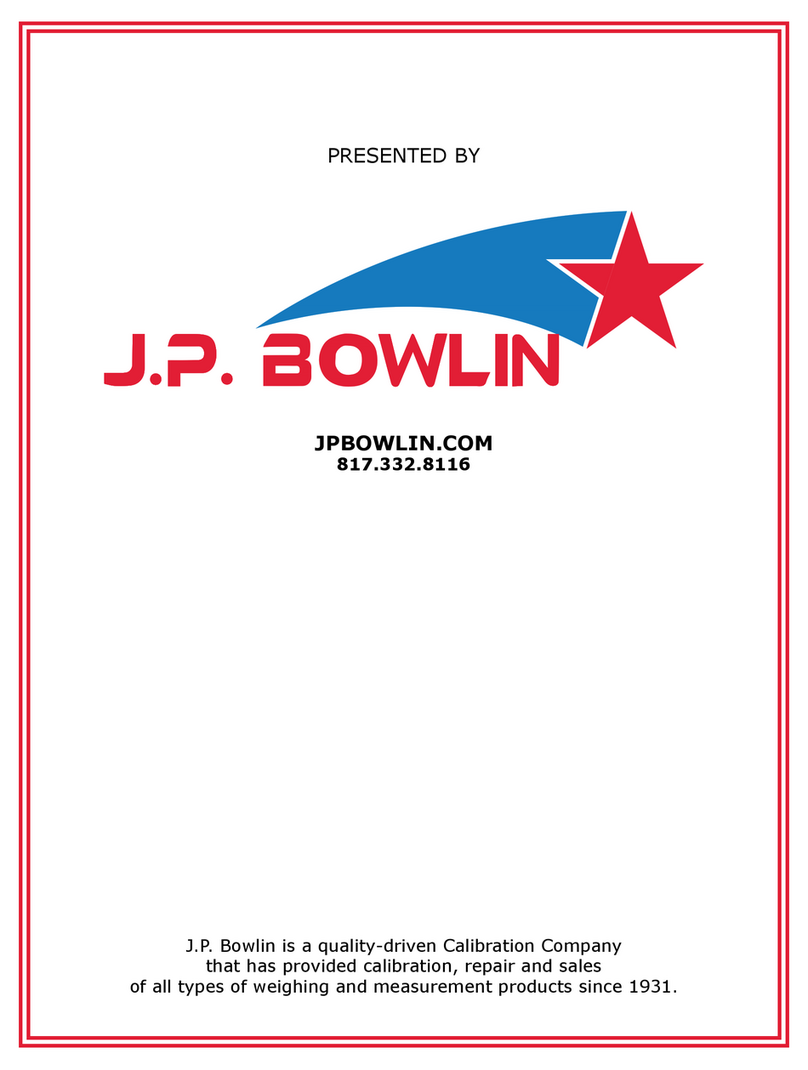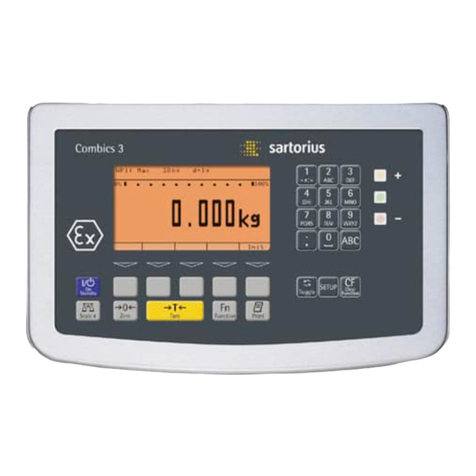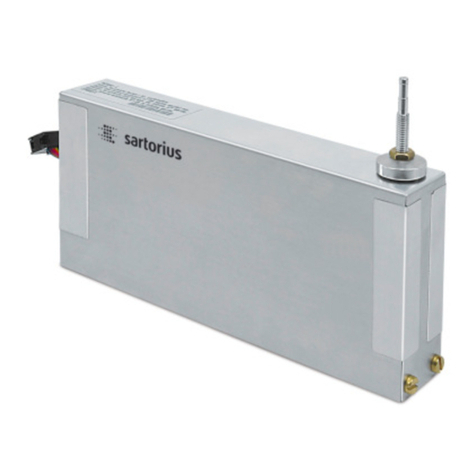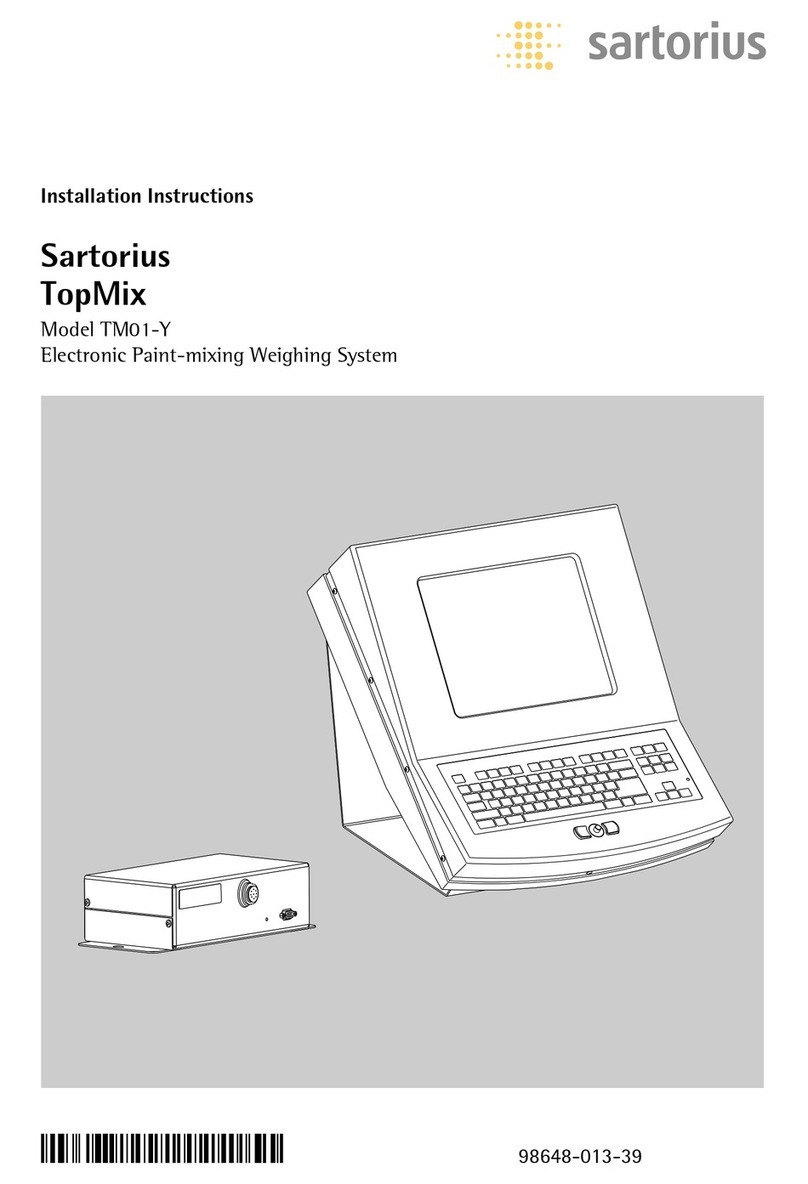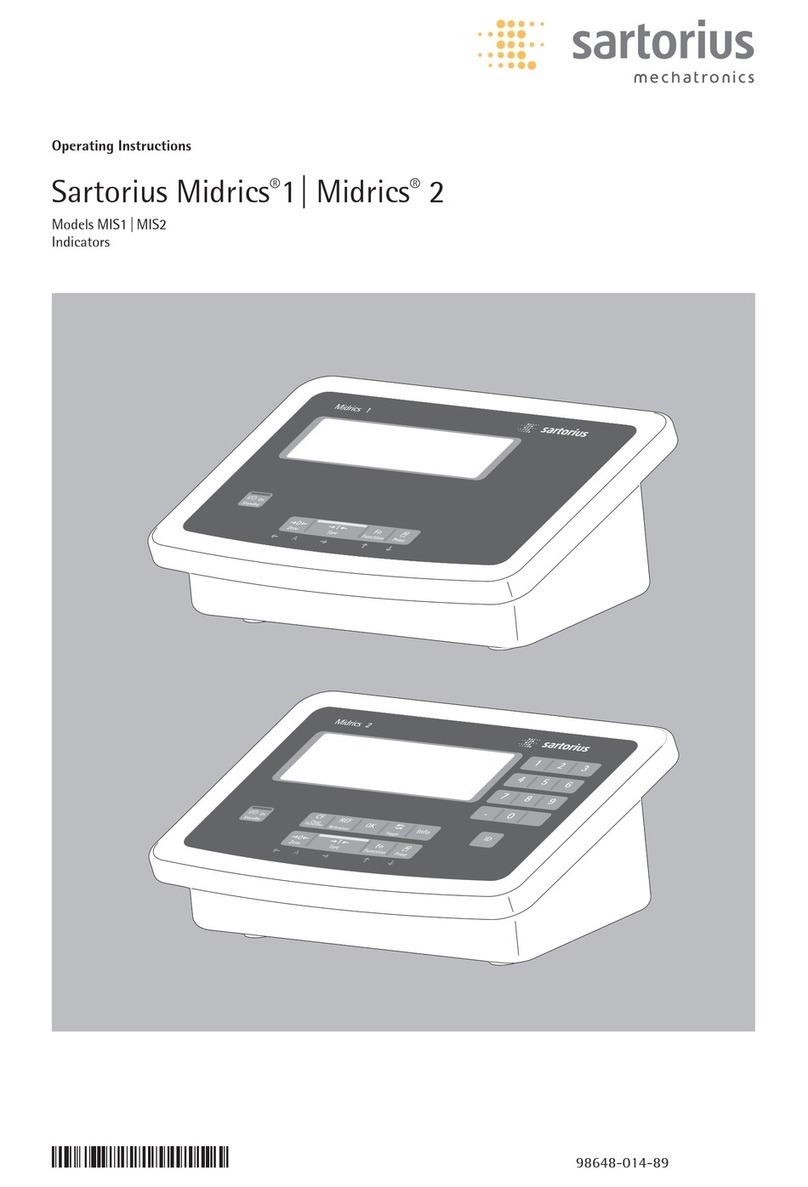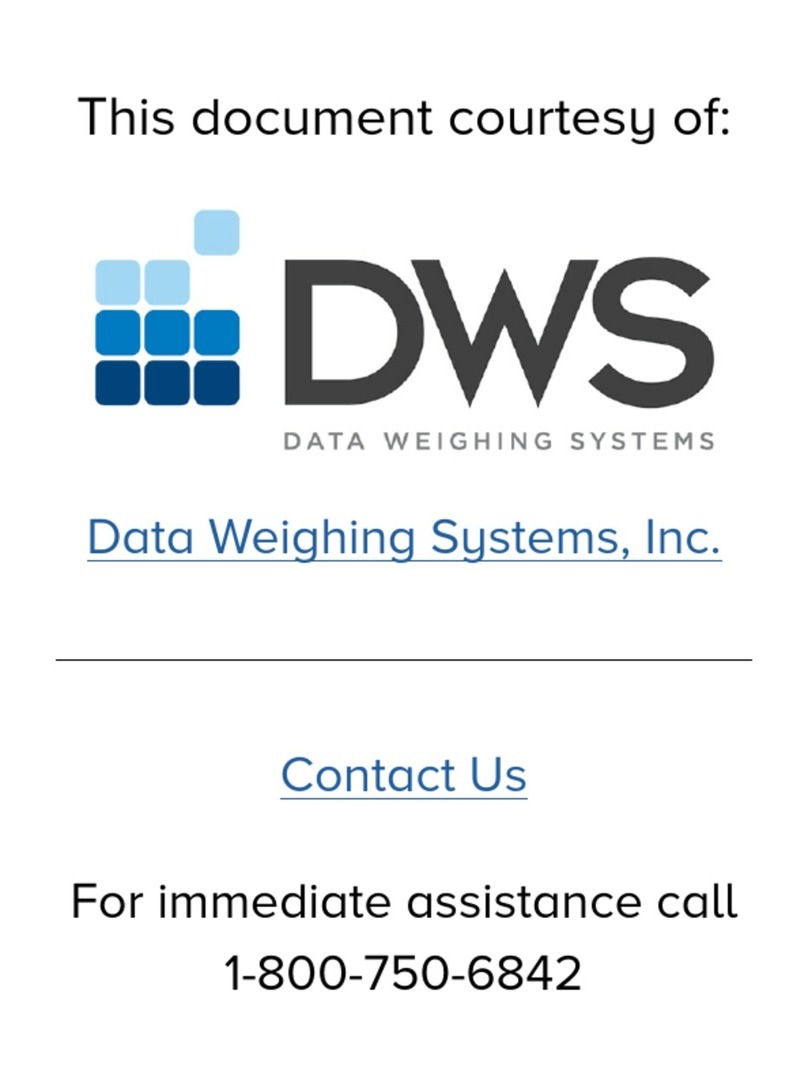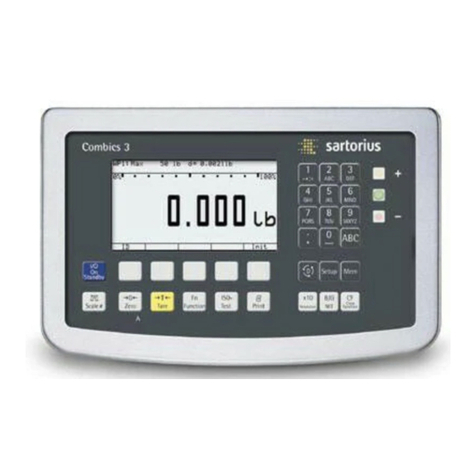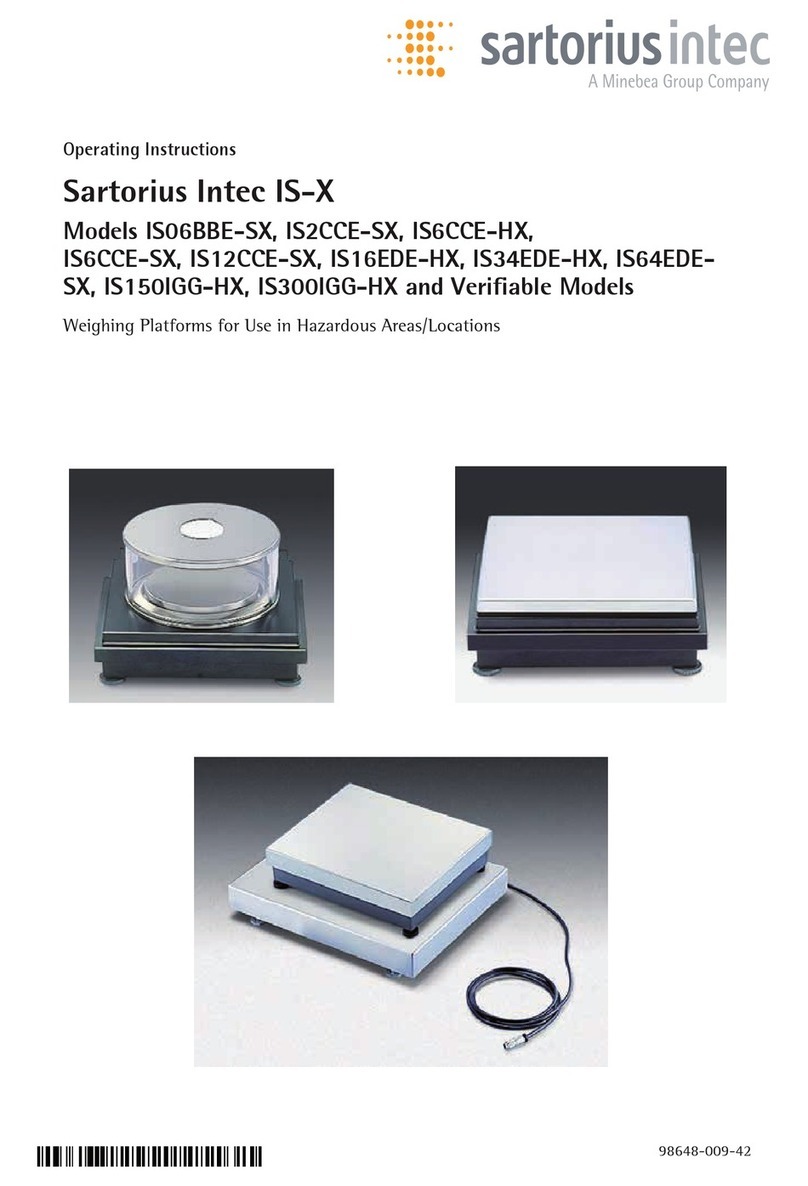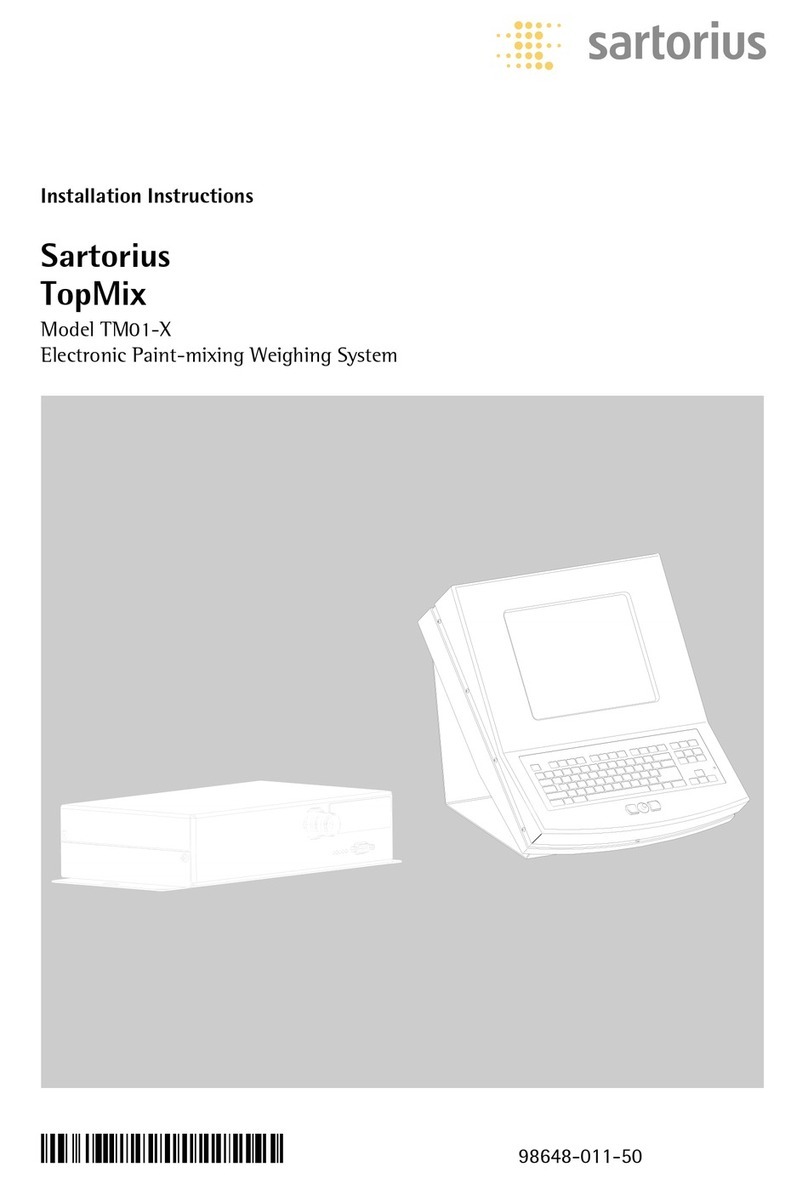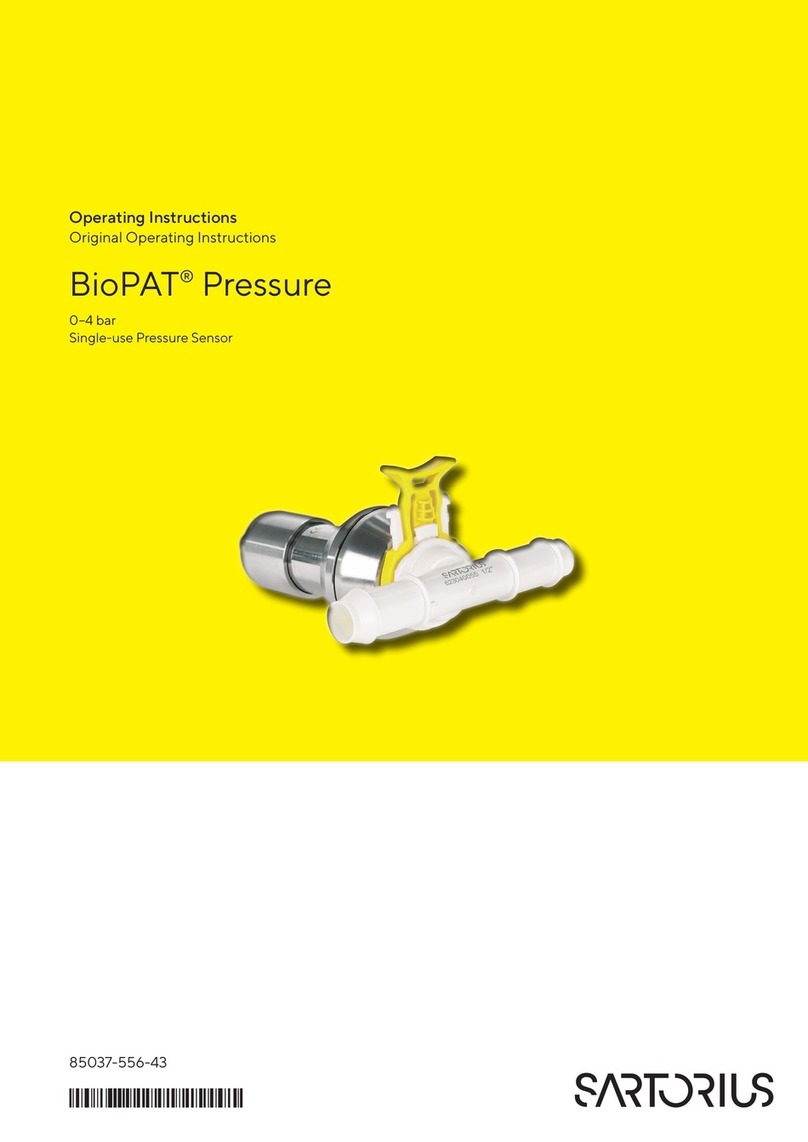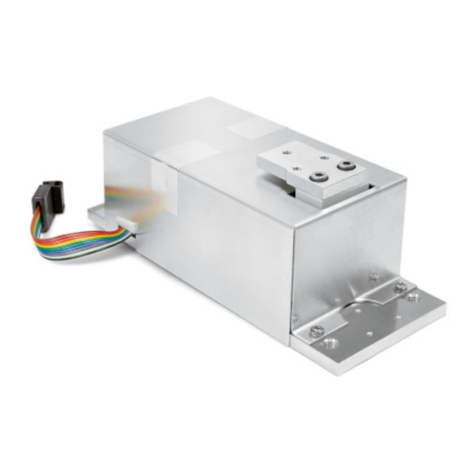
6
5. Cooling Air Operation
The weigh cell must not exceed an internal temperature of 60°C during cleaning.
Monitor the internal temperature when the cell is being cleaned with hot cleaning agents.
Monitoring can be done via the following XBPI commands:
XBPI Commands: Temperature Sensor
For in-depth information concerning Sartorius xBPI-functions refer to manual “Sartorius
– Description of Protocols and Functions in the Weighing Platform Interface”
Read Temperature
Fct.No. Input Output
076H Unsigned 1 Float5 (xBPI command response)
Input parameter Unsigned 1 (1) relates to existing sensor (only sensor 1)
Bit Explanation (if bit =1)
0 Sensor 1
Example
Function XBPI-Command Response
Read Temperature Len, 01, 09, 76, 21, 00, Chk Len, 41, 35, float5, Chk
example: 06:01 09 76 21 example:
00:A7 08:41 35 41 CE 05 E0 00:72
→ internal Temperature = 25.753°C
Len = Numbers of bytes to follow, including the checksum
Chk = Checksum of the entire message including the “length” byte; Module 256 – sum of
all preceding bytes(*)
(*) for comprehensive information refer to manual “Sartorius – Description of Protocols
and Functions in the Weighing Platform Interface”
Please note:
– The temperature sensor is not individually calibrated - it is good to measure temperature
differences of some degrees.
– The temperature sensor is thermally connected to a massive metallic part - it is much
slower than the air temperature.
Dry, oil-free, filtered cooling air can be directed through the cell if the temperature
of the cleaning agent is greater than 60°C (inlet connection 8, outlet connection 9).
The pressure within the cell cannot exceed 50 mbar, and the air volume cannot exceed
1500 liters per hour. Cooling air can also be used to return the cell to an operating
temperature more quickly once the cell has been successfully cleaned. After cleaning,
allow the cooling air to flow in, keeping the closing mechanism of the shield plate open
(no pressure to connection 7). This process dries the area around the seal.
Cooling results greatly depend on how the weigh cell is installed and therefore must be
determined by testing it on site.
4. Internal Calibration
The weigh cell has a built-in calibration
weight, which can be used to check that
the cell is functioning properly or to read-
just the sensitivity of the cell. The built-in
calibration weight has a mass of approx.
10 g. It is calibrated at the factory.
The calibration value is entered in the
data record as the “user-defined weight“
and should not be overwritten (except
when recalibration occurs). Use the Public
CAS software tool to enter the calibration
weight.
The weigh cell is calibrated/adjusted in
the same way as it would be using a
user-defined weight. The menu is pre-set
accordingly (1.1.9.3 and 1.1.10.1).
Calibration is triggered via interface
command Esc f1_ when the weigh cell has
nothing on it (see installation instructions).
Upon triggering the calibration, 6 bar must
be applied to the pressure inlet for the
weight circuit until the value has been
exceeded. Then switch off the pressure.
Mounting surface 6 H8; 6 deep
d 6 H8; 6 deep
M6; 6 deep
10
6
10
7
3
1
2
4
